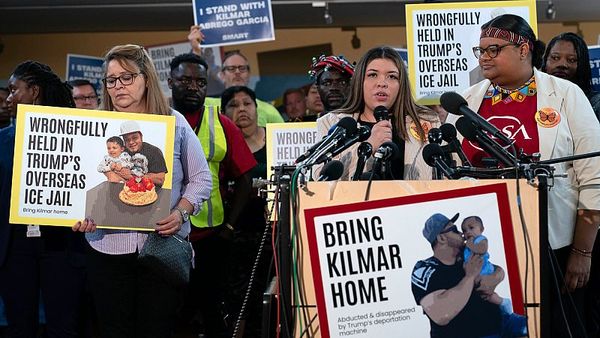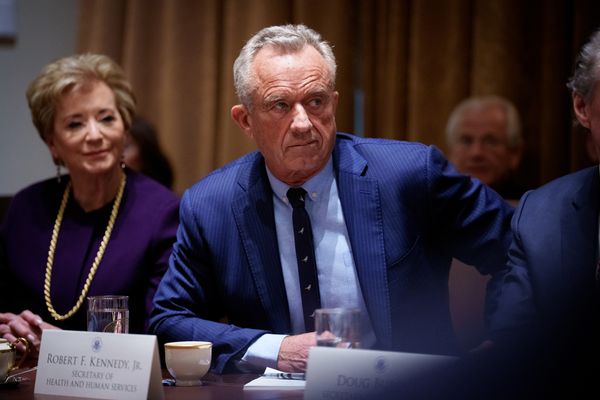
A Palestinian baby in Gaza has been partly paralysed from polio in the first case there for 25 years, amid preparations for a difficult and dangerous vaccination campaign in the midst of war.
The head of the World Health Organization (WHO), Tedros Adhanom Ghebreyesus, confirmed that the affected infant had lost movement in his lower left leg, but was in a stable condition.
More than 1.6m doses of vaccine against poliovirus type 2 (cVDPV2), the variant of the disease involved, are due to be delivered to Gaza for an immunisation campaign in two rounds. The first round is due to begin on 31 August and the second at the end of September or beginning of October.
The refrigeration equipment required to keep the vaccine at the right temperature (2-8C) entered Gaza through the Kerem Shalom gate on Friday, according to the UN children’s humanitarian agency, Unicef.
Jonathan Crickx, a Unicef spokesperson in the region, said that the aim was to vaccinate more than 640,000 children under the age of 10 against poliovirus type 2 in both rounds of the campaign.
“For the vaccination coverage to be sufficient, 95% of the children must receive the two doses of vaccines,” Crickx said. The vials of vaccine are expected to arrive in the next few days by air to Tel Aviv and then be driven into the Gaza Strip through Kerem Shalom. They will be stored in a refrigerated warehouse in Deir el-Balah, halfway up the Strip.
The UN is appealing to Israel and Hamas for a humanitarian ceasefire to allow humanitarian workers to carry out the immunisation campaign.
“Polio will not make the distinction between Palestinian and Israeli children,” Philippe Lazzarini, the head of the UN relief agency, Unrwa, said. “Delaying a humanitarian pause will increase the risk of spread among children.”
Hamas has said it supports a humanitarian ceasefire. Israel has not committed to such a pause but has said it will “facilitate” the immunisation campaign.
“It is important to understand that you cannot implement a polio vaccination campaign without at least temporary pauses in fighting,” Crickx said. “The parents must be able to bring their children to health centres or to the mobile units safely. Also, the humanitarian and health workers that will provide the vaccines must be able to do so safely and to be able to access the children that need the vaccine.”
Unrwa has said it has been able to provide vaccinations to 80% of Gaza’s children since the current conflict began last October, but those were not specific to type 2 poliovirus, and the vaccination rate was significantly down from the prewar standard (99% in 2022 according to the WHO and Unicef), which had kept polio at bay in Gaza for 25 years.
The Israel Defense Forces section responsible for occupied Palestinian territories, Cogat, said on Friday that 43,250 vials of vaccine “specifically tailored to address the virus identified in environmental samples” were expected to arrive in Israel and subsequently enter the Gaza Strip.
Each vial contains multiple doses, and the total should be more than enough to provide more than 1 million children with two rounds of vaccination, Cogat added.
It said Israel would provide refrigerated trucks to keep the vaccines cool, but in a social media post, Lazzarini said: “It is not enough to bring the vaccines into Gaza and protect the cold chain.
“To have an impact, the vaccines must end up in the mouths of every child under the age of 10.”
The challenge of distributing the vaccine in Gaza will be substantial. Most families have been displaced by Israeli bombing several times over. In the absence of a ceasefire, the whole operation will be highly dangerous to healthcare workers, the children being vaccinated and their families.
“No one is safe, nowhere is safe,” Tedros said. “People have barely any options left, after being uprooted multiple times, to find shelter, health and other services in an already crammed and challenging environment.”
Writing on the X social media site, the WHO chief added: “The close proximity of evacuation orders to medical points and hospitals in the affected areas places these health facilities at risk of becoming non-functional due to insecurity and lack of safe access for patients, health workers, ambulances and partners to resupply them. This must be avoided at all costs.”







